
I Don’t Like Hiding my Huevos
Easter is Pascua in Spanish. It’s the same festivity in two different cultures—religious or not. Wait! What? Not religious? I thought it was. Not necessarily! LOL! That’s not funny Easter Bunny! Well, more than funny is funky!
What’s the matter? “Well, I don’t really understand this Easter egg tradition”, Oldie Bunny said. In therapy, the doctor asked: Why? Oldie Bunny said, I don’t like hiding my huevos (eggs).
What? I am so confused! What are you talking about Willis? Ok! Let’s spill the beans: Imagine a Spanish-speaking Easter Bunny going to therapy for not understanding the American rabbit’s tradition of hiding their huevos en Pascua.

Why the urge to hide your huevos?
This is not very egg-citing for old Spanish bunnies! According to Easter tradition, bunnies hide eggs with goodies inside, waiting to be found. However, hiding “huevos” (eggs) is not a very common tradition for a Spanish-speaking bunny in America Latina. That’s why Oldie Bunny looked so confused.

Oldie Bunny Seeks Therapy!
As Oldie Bunny sits in his therapy session, struggling to understand the American tradition of hiding Easter eggs, the therapist suggests exploring the broader context of Easter traditions to shed light on his confusion.
This prompts Oldie Bunny to reflect on the cultural differences he’s encountered, leading into a discussion of Easter traditions and their variations across different cultures.
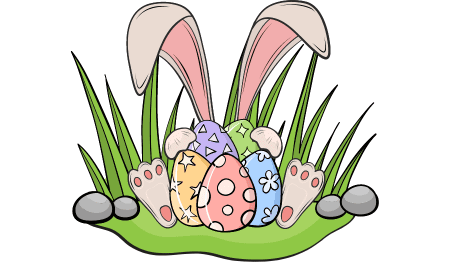
Oldie Bunny’s Predicament
Understanding Oldie Bunny’s predicament, we would be able to discuss further and promote cultural awareness, the doctor explains. We don’t want more confused bunnies not knowing what to do with their “huevos”.
Let’s get started with Easter festivities origins to better help our dear friend Oldie Bunny understand cultural differences.

Los orígenes de la Pascua
Easter/Pascua is a religious festivity, right? Maybe! Historical scholars are still unsure which religion though! Whether the tradition comes from a pagan Goddess ritual, a Christian divinity or a fascinating syncretic and romantic tradition it’s not essential to our discussion.
Kasa De Franko intends to help you understand the Hispanic tradition from a Peruvian perspective. Born and raised in Peru, Oldie Bunny traveled around other Spanish-Speaking countries, and because of this, he can definitely offer a well-rounded experience when teaching Spanish and Latinoamericans traditions.

Comparing the South and the North!
Let’s compare how Pascua/Easter is celebrated in both the Northern and Southern hemispheres of the American continent. Although Easter and Pascua share similarities, it’s easy to find the differences between both celebrations—especially in the Americas.
In the Christian tradition, both cultures celebrate the resurrection of Jesus Christ. This doesn’t mean they don’t also share other more pagan traditions. It’s a fantastic syncretism (blending of two religions) that allows us to enjoy what we now celebrate.
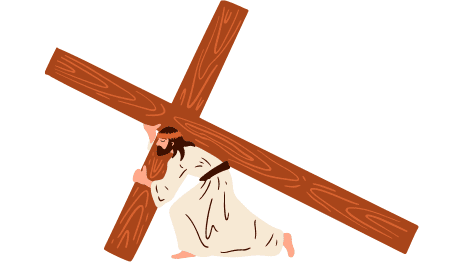
Semana Santa In Peru
In Peru, a sort of a ritual of church-hopping with a repetitive mumbling praying of “el Rosario” is a very popular tradition during Semana Santa (Holy Week). You see here, in Peru, peeps hop from church to church to lay on their knees while in the North rabbits lay eggs and hop from one to another—or they just hop around. You know: Just for fun!
Practitioners sit on their knees cruising around to (at least) seven churches. While on their knees, they perform strange rituals and movements to help their sins go away. Cue the dance music, right!?
If you want to wash your sins away as well, then don’t use any soap. Instead, you must be a good Catholic and follow the traditional cannibalistic and vampiric rituals of eating the body and drinking the blood of your Lord. Now, let’s go back to the Oldie Bunny’s huevos and what the doctor has to say.
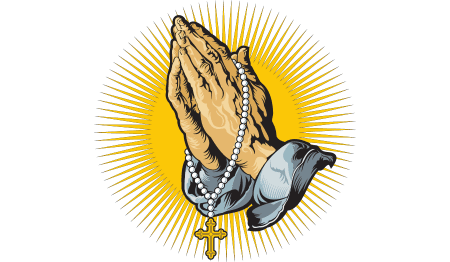
I don’t paint my huevos
Do bunnies in the Spanish culture paint their “huevos” like in North America? The therapist asked! NO! What a weird culture right? That’s so boring! Oldie Bunny replied. Anyway, on to more important matters! The therapist said as he continued with the session.
How do we go from the savior of mankind to a humanoid rabbit that stashes eggs filled with goodies? Jesus and the bunny can’t be the same person, can they? ¡Oh Dios mío, espero que no! Oldie Bunny said.
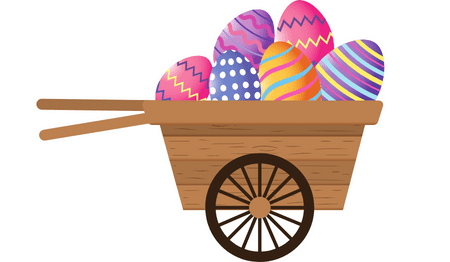
Christ & the Rabbits!
We have tons of theories out there, but nobody knows for sure how Jesus got related to rabbits! In some ancient cultures, rabbits represent fertility. Whoever made us believe that bunnies get to hide eggs so that people can find them, had no idea of the outcome.
This tradition has been completely ignored for centuries by the Christian tradition of South American countries. Nowadays, this bunny tradition is starting to gain popularity and people are now talking about “el conejo de Pascua” (Easter bunny) in Peru.

Perusalem: A Bizarre Culture!
In some Spanish-speaking countries, we have followed other types of bizarre traditions. In Peru, Catholics take their sacred images (a.k.a. DIVINE TOYS) for a ride around the “hood”—they call it processions.
However, times are changing and, now, people are more into celebrating with the Easter bunny exchanging and decorating their “huevos”—of course.

How Peruvians Experience New Traditions!
Nowadays, the new generation of Peruvian bunnies are adjusting themselves to modern times and are open to celebrating Easter the same way as their counterparts in Europe and the United States. However, the older ones are having trouble understanding why the new generations keep hiding their “huevos” on Pascuas!
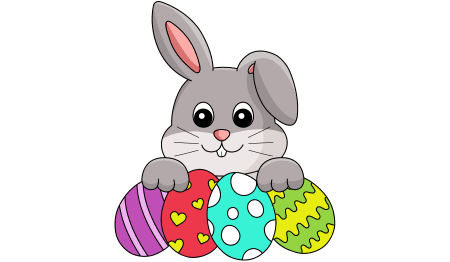
On Therapy!
As older bunnies go to therapy, they talk to their specialists to find an explanation for their problems. Not being able to find a solution to their lack of social adjustment, older bunnies try to blame it on their younger counterparts.
They regularly accuse them of adopting those foreign and weird habits of not only hiding but also coloring their “huevos.” They can’t understand younger bunnies being proud of first hiding their eggs to later showing off their multicolor “huevos” and passing them from hand to hand.

Younger Bunnies Going to Therapy
Some of the younger bunnies also go to therapy, but for a different reason: They can’t understand why, for them, hiding their “huevos” has become a problem and affects their entire life—even preventing them from working. They didn´t need to hide their huevos before and nowadays they feel the urge.
They also want to be hiding their “huevos.” This problem gets worse after carnival and lent and escalates around Easter time. The most common way to deal with it is eating lentils during lent and fish the two last days before Easter.

Times are changing!
However, older bunnies understand that times are changing, and they must adjust themselves to societal changes–especially those older than 50. To avoid any social sanction, they have also started to hide their “huevos’’. Since they are not used to this new habit, they don’t tend to be very successful at protecting all of them and with difficulty they only get to hide half of them.
Those in their 40’s have an easier time understanding the new changes but bunnies over 70 years are more successful hiding their “huevos.” Even though they don’t like painting their huevos, they seem to adjust better to the new times. That’s good. They do not need to show their huevos anymore!
Well, at least the older cojones “conejos” don’t recycle their food (a.k.a. as KK o sea “caca”) as much as the youngest one does. Yes, the youngest is usually full of shit! Let’s wrap up our session with Oldie Bunny.

Embrace Cultural Differences!
The point here is, the therapist tells Oldie Bunny, cultures vary greatly depending on what country you’re standing in. The beauty of learning a foreign language is not just the ability to communicate but to experience an entirely new world.
My best advice to you during Easter, the therapist continues addressing Oldie, besides signing up for a course at Kasa De Franko is, always good to keep your “huevos” where the sun doesn’t shine! It helps keep them fresh and nobody would mess with them?

Understanding Cultural Differences
Oldie Bunny, it’s understandable that you’re feeling frustrated and confused by these new traditions, the doctor says. Remember, it’s okay to feel uncertain when faced with unfamiliar customs. Instead of focusing on what you don’t understand, try to approach these traditions with curiosity and an open mind.
Take small steps to explore and learn about them, and don’t be afraid to ask questions or seek guidance from others. And most importantly, be patient with yourself as you navigate this cultural journey. You may find that embracing these new traditions brings joy and enriches your own cultural experience in unexpected ways.

What We Can Learn!
Just as Oldie Bunny navigates his confusion with humor and resilience, we too can embark on our own journey of cultural understanding through language and education.
So, let’s embrace the richness of Spanish language and culture at Kasa De Franko, where learning is not just about communication, but also about experiencing an entirely new world. Why not starting this journey with a complimentary ticket for a Spanish ride?

Learn Spanish for Free!
Contact us at Kasa de Franko! Now that you know Easter is Pascua in Spanish, go for more. We teach cool facts about Latino-America and traditions of other Spanish-Speaking countries along with expert language instruction. Follow the rabbit to good fortune, my friends!

